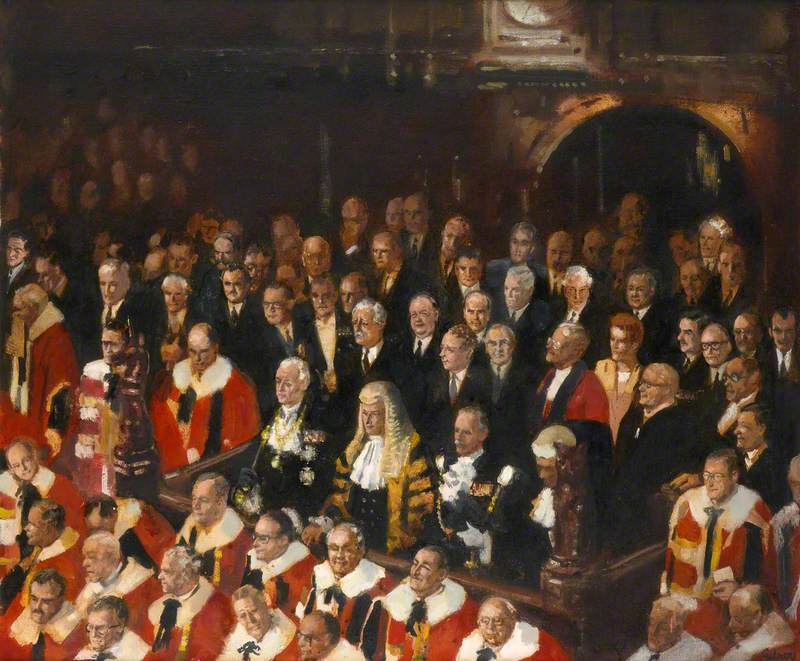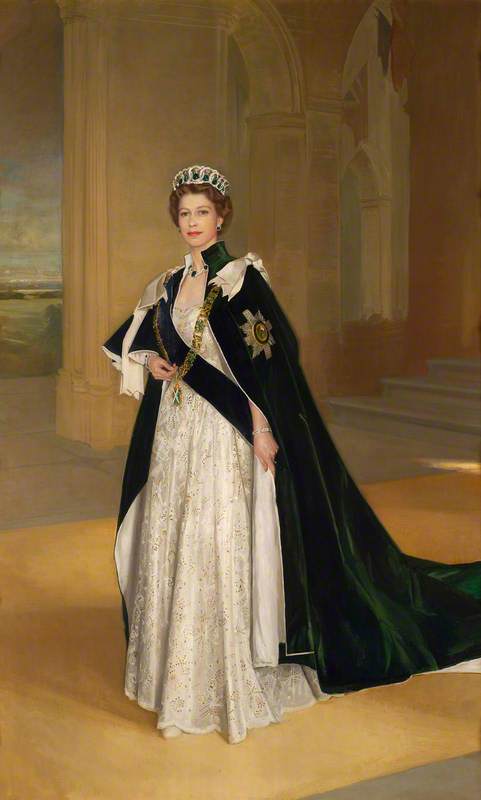On 9th September 2015, Queen Elizabeth II became the longest reigning monarch in British history. For 70 years, Her Majesty dedicated her life to service and official duties.
The Queen held many vital roles and performed many national duties ranging from opening Parliamentary sessions to the annual Christmas message broadcast across the commonwealth. From her first solo public engagement as a 16-year-old Princess, to continuing to undertake duties at 96 years of age, Her Majesty carried out over 21,000 engagements over the course of her reign.
As Head of State, the monarch is an essential part of how Parliament works. Here we use works from our own and other collections to look at the many duties performed by Queen Elizabeth II.
-
The Queen in Parliament
Elizabeth II c.1954As Head of State, The Queen remained strictly neutral with respect to political matters. However, the crown holds several important duties at Parliament.
The formal phrase 'Queen in Parliament' was used to describe the British legislature, which includes the Sovereign, the House of Lords and the House of Commons, during her reign. This is now 'King in Parliament'.
Herbert James Gunn painted The Queen to commemorate her coronation in 1953. She wears her coronation robe and stands beside the Imperial State Crown and sceptre. The original portrait hangs in Windsor Castle. The Parliamentary Art Collection holds the ‘master copy’ which can be seen in the Royal Gallery.
Herbert James Gunn (1893–1964)
Oil on canvas
H 243.8 x W 152.4 cm
Parliamentary Art Collection
-
Her Majesty the Queen Addressing Both Houses of Parliament on the Occasion of Her Golden Jubilee, Westminster Hall 2002
The day after a general election the monarch invites the leader of the party that won the most seats in the House of Commons to become Prime Minister and to form a government.
Queen Elizabeth II was served by 15 Prime Ministers during her reign – her first Prime Minister was Sir Winston Churchill. Churchill became a Member of Parliament during the reign of The Queen’s great-great grandmother, Queen Victoria.
This painting by Julian Barrow depicts Queen Elizabeth II replying to the loyal addresses of both Houses of Parliament on 30th April 2002 to mark the beginning of her Golden Jubilee year.
Julian Barrow (1939–2013)
Oil on canvas
H 74 x W 98 cm
Parliamentary Art Collection
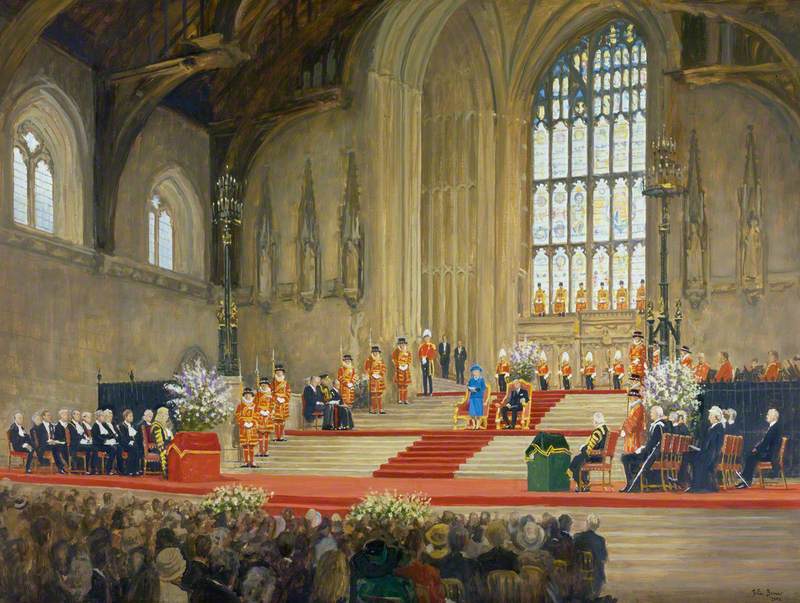 © the artist's estate / Bridgeman Images. Image credit: Parliamentary Art Collection
© the artist's estate / Bridgeman Images. Image credit: Parliamentary Art Collection
-
The House of Lords Debating the Queen's Speech, November 1995 1998
When a Bill has been approved by a majority in the House of Commons and the House of Lords, it is formally agreed to by the Crown. This is known as the Royal Assent. This turns a Bill into an Act of Parliament, allowing it to become law in the UK.
Queen Elizabeth II gave Royal Assent to approximately 4,000 Acts of Parliament.
This large painting by Andrew Festing depicts the House of Lords in 1995 debating the contents of that year’s Queen’s Speech. It includes over 350 members divided up into 6 canvases and took over a year to paint.
Andrew Festing (b.1941)
Oil on canvas
H 287.1 x W 523.3 cm
Parliamentary Art Collection
-
State Opening of Parliament
Elizabeth II at the State Opening of Parliament, 1962 1962State Opening marks the beginning of the Parliamentary year when the monarch comes to the Palace of Westminster. The Monarch also dissolves Parliament before a general election. The Queen attended State Opening every year of her reign, except in 1959 and 1963 while pregnant and 2022, when Kinch Charles III undertook the duty for the first time.
This portrait of Queen Elizabeth II shows her wearing the robes worn on the occasion of the State Opening in 1962. It was painted at Buckingham Palace.
The monarch traditionally travels by Coach to the Palace of Westminster, where they arrives at the Sovereign Entrance of the House of Lords.
Alfred Kingsley Lawrence (1893–1975)
Oil on canvas
H 91.4 x W 76.2 cm
Parliamentary Art Collection
-
The Yeoman of the Guard Searching the Crypt of the Houses of Parliament, London 1894
State Opening is very important for Parliament, and there are many traditions surrounding the day, including the ceremonial sweep of the cellars by the Yeomen of the Guard before the arrival of the Sovereign.
This painting shows the Guard in 1894, but the uniforms for these officers are the same today. In the 2022 State Opening, a woman led this ceremonial procession for the first time.
Arthur Temple Felix Clay (1842–1928)
Oil on canvas
H 147 x W 121.5 cm
Museum of London
-
The layout of the Palace of Westminster is designed with State Opening in mind. The Royal Staircase leads to the Robing Room, where robes and the Imperial State Crown are ready. In recent years the Imperial State Crown has been carried in the procession rather than worn. A procession passes from the Robing Room, through the Royal Gallery, and into the House of Lords Chamber.
The Chamber is home to the Sovereign Throne, where the monarch sits to deliver their Speech. This speech is written by the government, and outlines policy ideas and plans for the new parliamentary year.
This photographic print captures the State Opening of Parliament in 1958, with Queen Elizabeth II on the throne.
State Opening of Parliament 1958, Print by an unknown artist. © UK Parliament. Parliamentary Art Collection WOA 4721
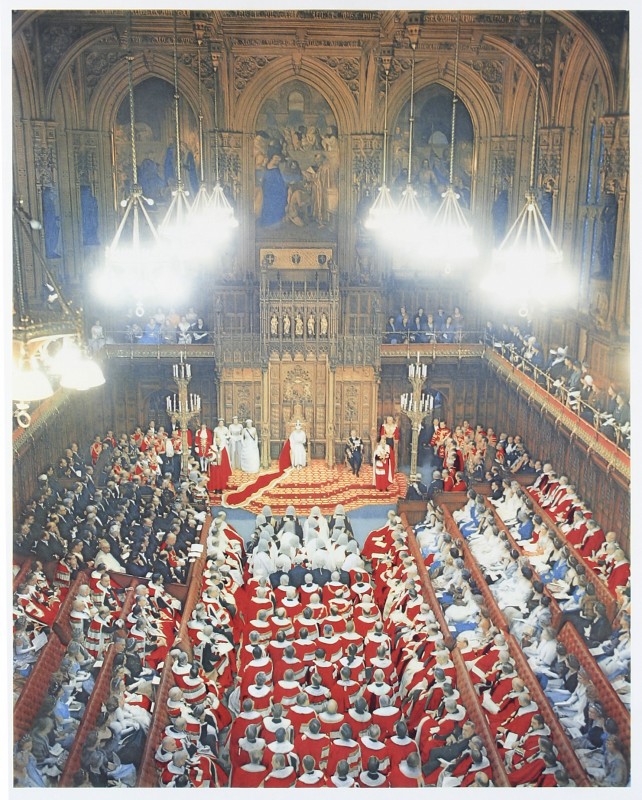 Image credit: © UK Parliament. WOA 4721
Image credit: © UK Parliament. WOA 4721
-
State Opening of Parliament, House of Lords, 1960
This view of the House of Lords Chamber captures a more unusual view of State Opening.
Before the speech can commence, Black Rod walks to the House of Commons Chamber to summon the Members of the House of Commons. Traditionally, they close the door, and Black Rod knocks on the door three times with their rod, before leading the MPs back to the House of Lords Chamber.
This painting captures the Members of the House of Commons crowding into the House of Lords Chamber to hear the speech in 1960. In the centre of the composition, you can see Black Rod and the Speaker of the House of Commons.
John Thomas Young Gilroy (1898–1985)
Oil on canvas
H 86.4 x W 98.5 cm
Parliamentary Art Collection
-
Parliament Square, Coronation 1953
The Palace of Westminster's clocktower, home to the famous bell Big Ben, was renamed Elizabeth Tower to mark Queen Elizabeth II's 60 years of service on her Diamond Jubilee in 2012.
Members from both Houses of Parliament funded and presented gifts to Queen Elizabeth II for every Jubilee in her reign. These form permanent additions to the Parliamentary Estate, and include a fountain, a sundial, and a stained-glass window. To mark the 2022 Platinum Jubilee, Members gifted a pair of unique bronze sculptural lampposts. Their lamps symbolise the guiding light that Her Majesty was to Parliament throughout her reign.
Fred Uhlman's depiction of Queen Elizabeth II's Coronation in 1953 shows the huge crowds outside the Palace of Westminster.
Fred Uhlman (1901–1985)
Oil on board
H 26.5 x W 38.5 cm
Government Art Collection
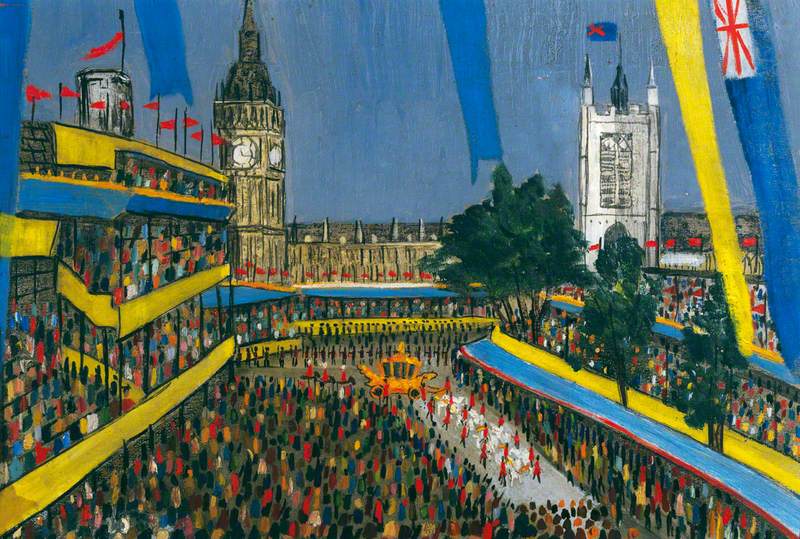 © the artist's estate / Bridgeman Images. Image credit: Government Art Collection
© the artist's estate / Bridgeman Images. Image credit: Government Art Collection
-
Outside of Parliament
State Visit of Elizabeth II to Ethiopia, 1965 c.1965–1966Queen Elizabeth II visited over 100 countries as monarch, and hosted 112 incoming State Visits to the United Kingdom. The monarch is also head of the Commonwealth, with 54 member countries.
Johannes Tessema (active c.1930–c.1970)
Oil on cotton
H 142 x W 230 cm
Government Art Collection
-
Opening of the College by Her Majesty the Queen, July 1960 1961
Queen Elizabeth II was a Patron of over 500 organisations, including over 70 education and training organisations; over 60 sports and recreational organisations; over 30 faith organisations; and over 40 arts and cultural organisations.
Terence Tenison Cuneo (1907–1996)
Oil on canvas
H 182 x W 243 cm
Royal College of Obstetricians and Gynaecologists
 © reproduced with kind permission of the Cuneo estate / Bridgeman Images. Image credit: Royal College of Obstetricians and Gynaecologists
© reproduced with kind permission of the Cuneo estate / Bridgeman Images. Image credit: Royal College of Obstetricians and Gynaecologists
-
HRH Queen Elizabeth II Wearing the Robes of the Order of the Thistle
The Queen conducted over 650 investitures throughout her reign. This includes bestowing OBE, MBE, damehoods and knighthoods.
This portrait depicts Queen Elizabeth II wearing the robes of the Order of the Thistle, one of the highest awards that can be bestowed in the UK. It is awarded to 16 Scottish people who have contributed to public life.
William Oliphant Hutchison (1889–1970)
Oil on canvas
H 232 x W 146 cm
The Company of Merchants of the City of Edinburgh
-
Presentation of the Queen's Colour to the Portsmouth Command 1986
Queen Elizabeth II held many ranks and appointments in the military. In 1945 she joined the Auxiliary Territorial Service (the women’s branch of the British Army during the Second World War), becoming the first female member of the Royal Family to join the Armed Services as a full-time, active member. As a Subaltern, she learned to drive and maintain vehicles.
This scene captures her bestowing The Queen’s Colours upon a regiment. This ceremony gives a new flag to a regiment when marking special anniversaries or events.
Each year in November, the monarch remembers those who have died in conflict at the Cenotaph in Westminster. The ceremony leads the nation in two minutes silence, and wreaths are laid at the foot of the monument.
S. Hogan
Oil on canvas
H 104 x W 120 cm
HMS Excellent
-
70 Years of Service
Her Majesty the Queen, Elizabeth II 1991Queen Elizabeth II's Platinum Jubilee saw celebrations held across the UK and the Commonwealth to mark her 70 years of service.
This portrait by Henry Mee was commissioned by the Speaker’s Advisory Committee on Works of Art in her Ruby Jubilee Year. The commission coincided with Queen Elizabeth II opening Portcullis House, a new Parliamentary building next to the Palace of Westminster, where the painting still hangs today.
Henry Mee (b.1955)
Oil on canvas
H 150 x W 100 cm
Parliamentary Art Collection
Explore artists in this Curation
View all 12-
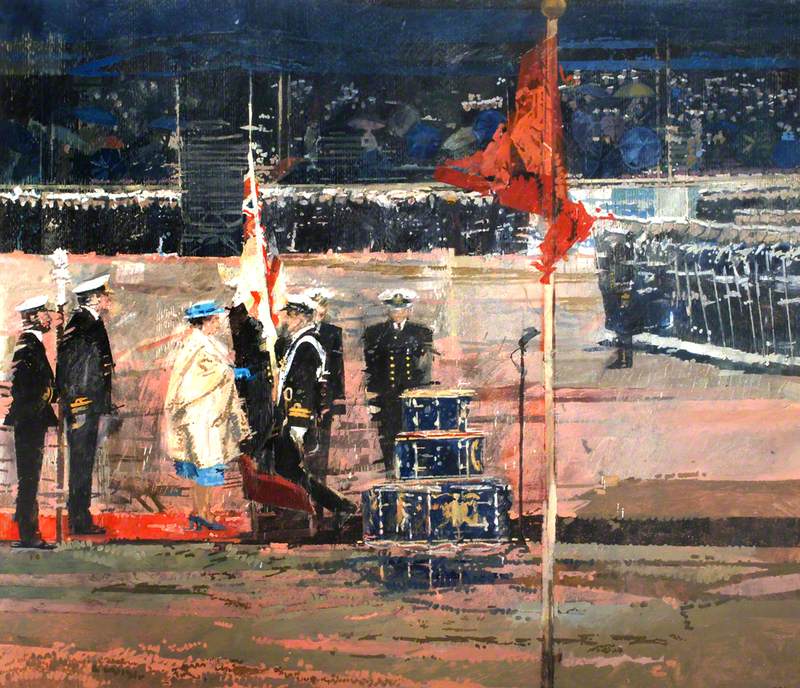 S. Hogan
S. Hogan -
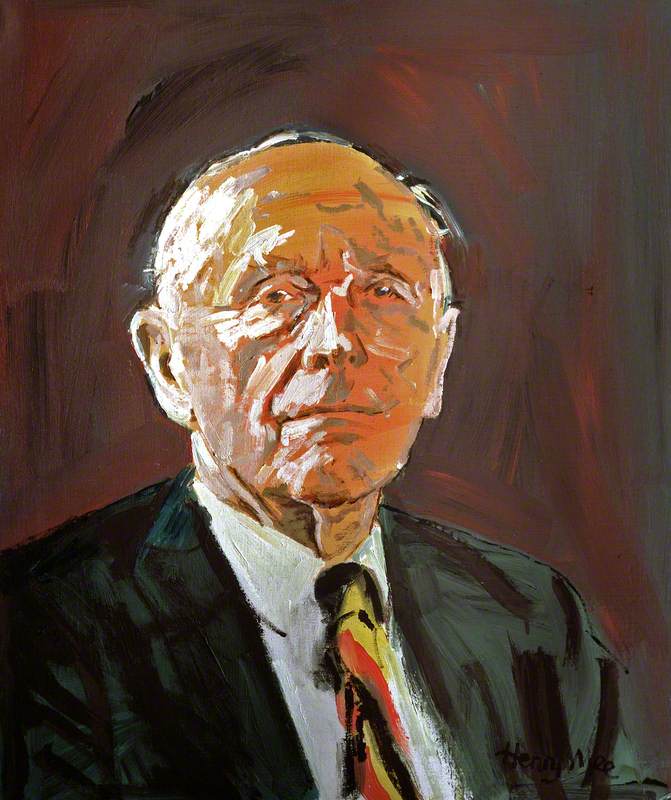 Henry Mee (b.1955)
Henry Mee (b.1955) -
 Julian Barrow (1939–2013)
Julian Barrow (1939–2013) -
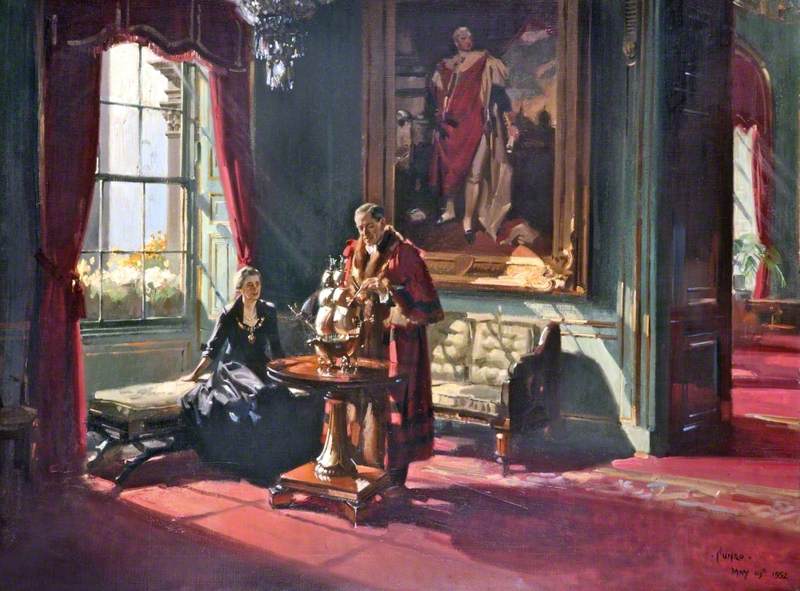 Terence Tenison Cuneo (1907–1996)
Terence Tenison Cuneo (1907–1996) -
 Arthur Temple Felix Clay (1842–1928)
Arthur Temple Felix Clay (1842–1928) -
 John Thomas Young Gilroy (1898–1985)
John Thomas Young Gilroy (1898–1985) -
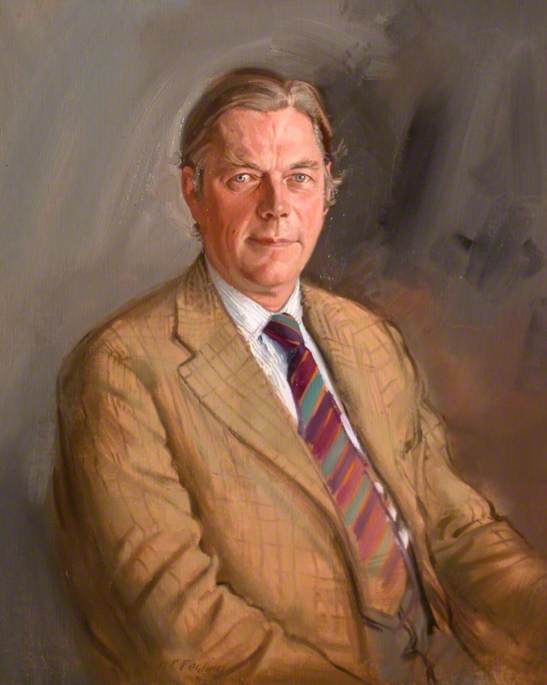 Andrew Festing (b.1941)
Andrew Festing (b.1941) -
 Johannes Tessema
Johannes Tessema -
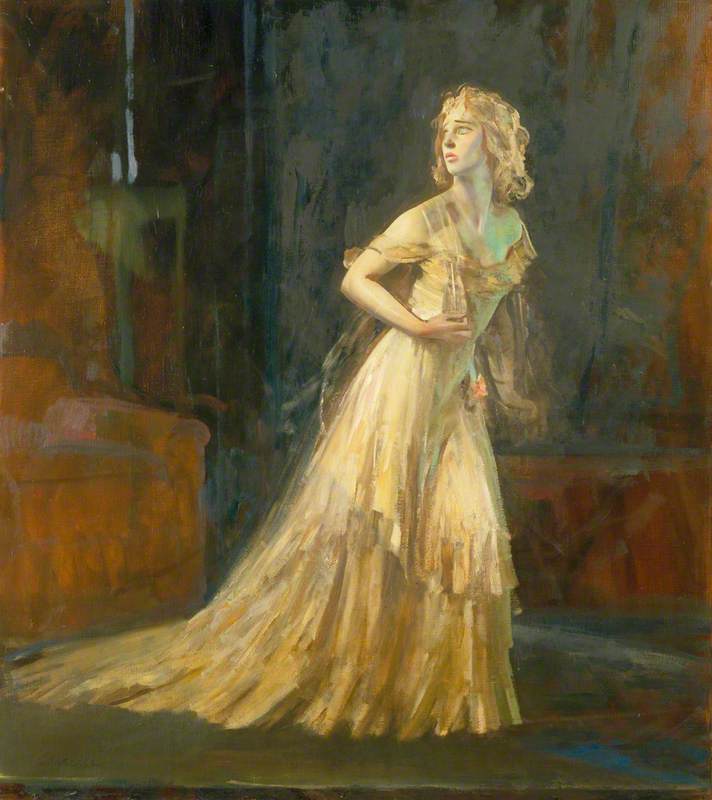 Alfred Kingsley Lawrence (1893–1975)
Alfred Kingsley Lawrence (1893–1975) -
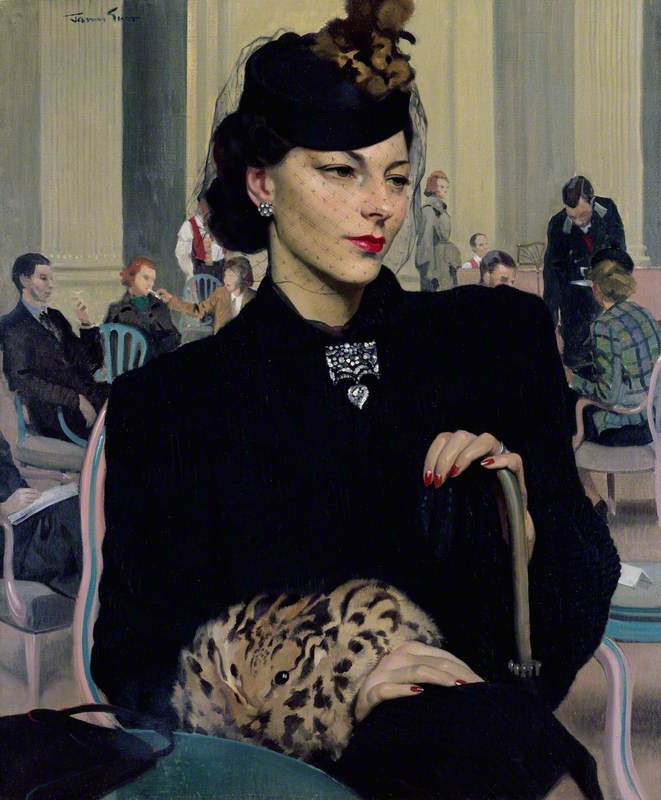 Herbert James Gunn (1893–1964)
Herbert James Gunn (1893–1964) - View all 12



